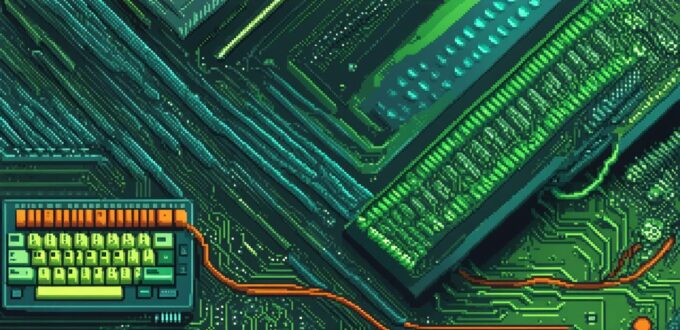As a software developer, you might have wondered why there is such a distinction between hardware and software. It’s a common question that many people ask themselves when they first start out in the industry. In this article, we will explore the reasons behind this distinction and how it affects our daily lives.
Hardware vs Software: What are They?

Hardware refers to the physical components of a computer system, such as the CPU, RAM, hard drive, and keyboard. These are the tangible parts that you can touch and feel, and they are responsible for storing data, processing information, and inputting commands into a system.
Software, on the other hand, refers to the intangible components of a computer system. It includes the programs and applications that run on top of the hardware, such as web browsers, text editors, and video players. Software allows users to perform specific tasks and interact with the hardware in meaningful ways.
The Naming Conventions: A Brief History
The terms “hardware” and “software” were first used in the 1950s by computer scientists John von Neumann and Grace Hopper. They distinguished between two types of computer systems: those that dealt with data (hardware) and those that dealt with programs (software).
At the time, hardware was seen as the primary component of a computer system, while software was considered to be an afterthought. However, this perspective has changed over time, as software has become increasingly important in our daily lives.
The Role of Hardware and Software in Our Lives
Today, hardware and software work together in harmony to provide us with a wide range of technologies that we rely on every day. From smartphones to laptops to desktop computers, the combination of hardware and software has transformed the way we live, work, and play.
One example of this is the rise of mobile technology. Smartphones have become an essential part of our lives, allowing us to stay connected with friends and family, access information on the go, and even perform complex tasks like banking and online shopping. This is all possible because of the combination of powerful hardware (such as high-performance processors and high-resolution displays) and software (such as mobile operating systems and applications).
Another example is the world of gaming. Gaming has come a long way since its early days, with modern consoles and PCs capable of delivering stunning graphics, immersive sound effects, and seamless gameplay experiences. This is all thanks to the combination of powerful hardware (such as high-end GPUs and fast CPUs) and software (such as gaming engines and operating systems).
The Impact of Hardware and Software on Society
The distinction between hardware and software has had a significant impact on society as a whole. It has driven innovation, created new industries, and transformed the way we interact with technology.
One example of this is the rise of e-commerce. Online shopping has revolutionized the retail industry, allowing consumers to purchase goods and services from anywhere in the world. This was made possible by the combination of powerful hardware (such as fast internet connections and secure payment systems) and software (such as online marketplaces and customer relationship management systems).
Another example is the impact of social media on society. Social networks like Facebook, Twitter, and Instagram have become an integral part of our daily lives, allowing us to connect with friends and family, share information, and even participate in political discourse. This was made possible by the combination of powerful hardware (such as high-speed internet connections and fast computers) and software (such as social media platforms and applications).
FAQs
What is hardware?
Hardware refers to the physical components of a computer system, such as the CPU, RAM, hard drive, and keyboard.
